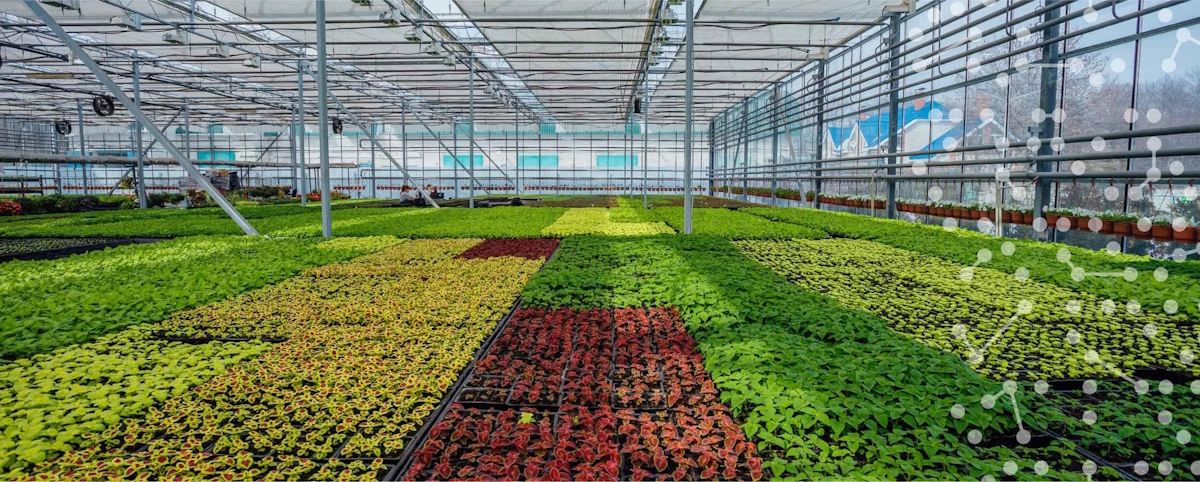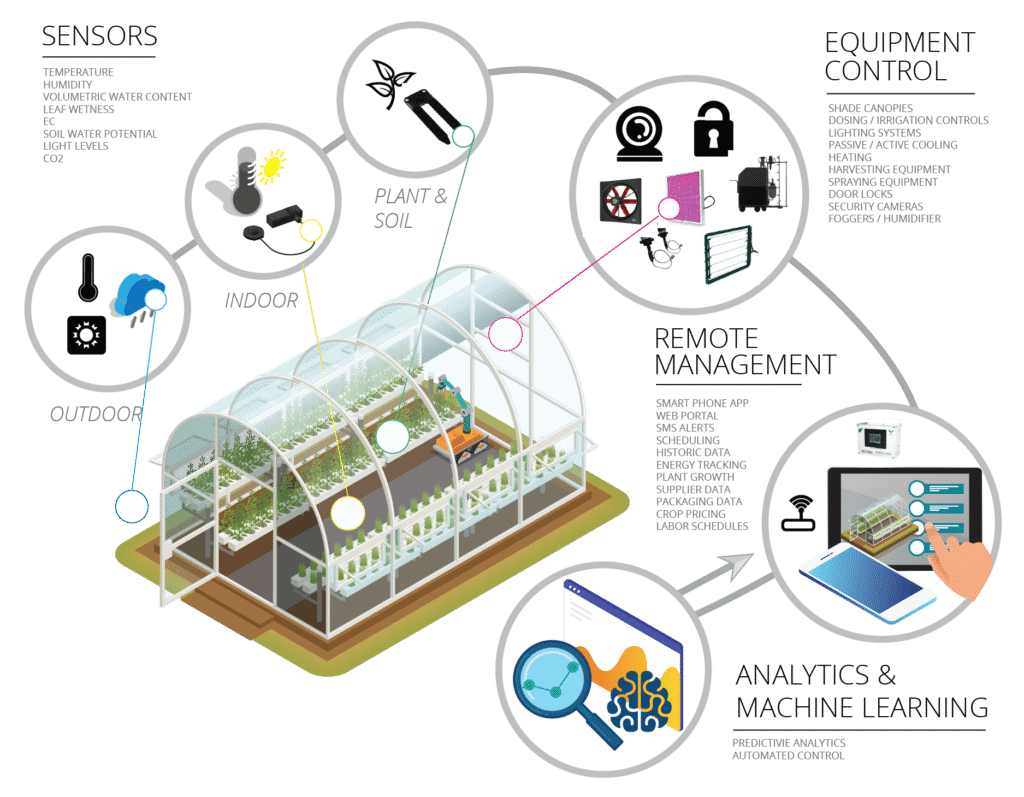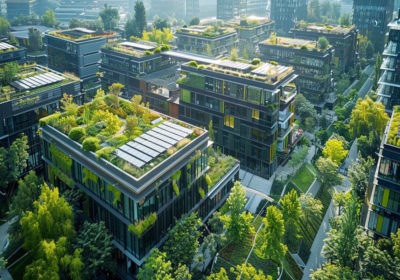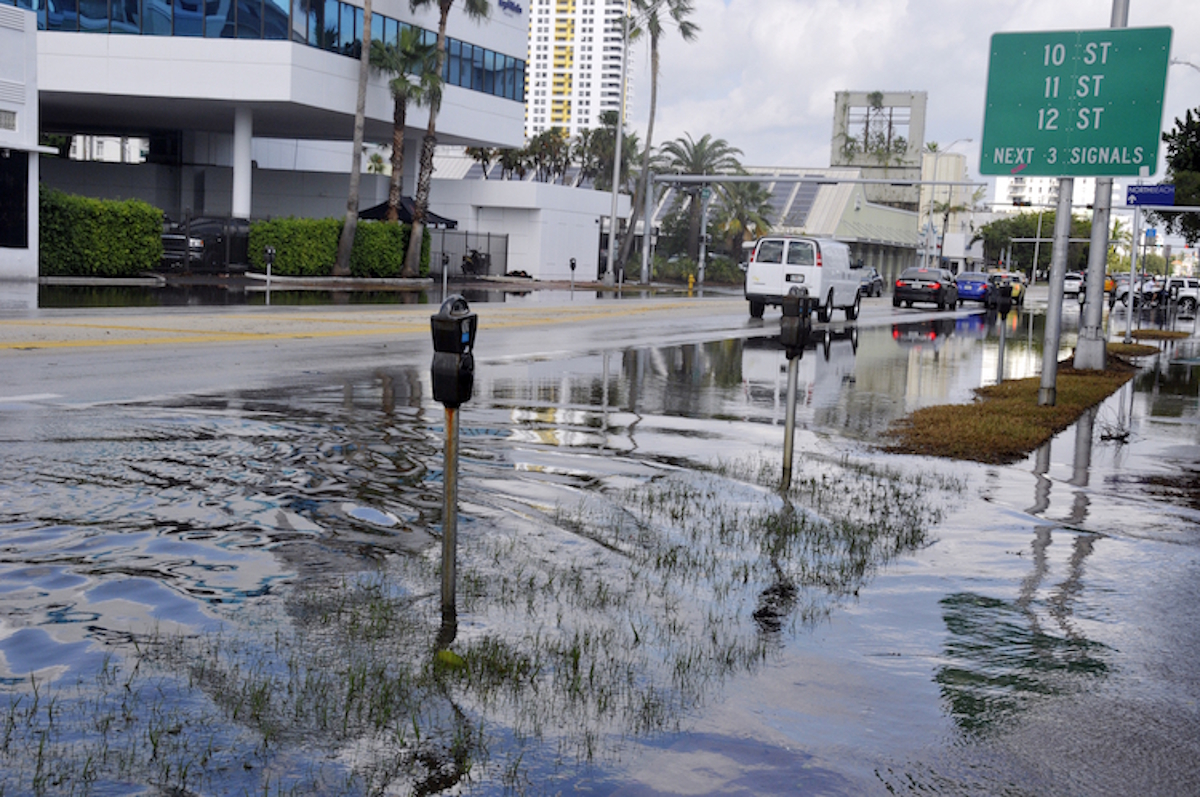At the intersection of renewable energy, artificial intelligence and sustainable urban planning, the Archimede intelligent greenhouse in Comiso offers a concrete glimpse of how future cities might produce food, energy and data within the same physical space. Far from being a simple evolution of traditional protected cultivation, this photovoltaic greenhouse operates as a digitally augmented ecosystem in which light, water, air and energy are continuously monitored and optimised

In Comiso, in the province of Ragusa, a new model of intelligent photovoltaic greenhouse, christened Archimede, represents a turning point not only for protected cultivation but also for the broader debate on how artificial intelligence, renewable energy and urban planning can converge in the construction of sustainable and resilient smart cities. The Archimede Greenhouse combines solar energy production and sustainable agriculture within a single architectural and functional system, modulating light to favour photosynthesis and improve crop quality without reducing agricultural productivity. Seen in isolation, it is an agricultural innovation; seen within the wider context of data-driven governance, energy transition and digital infrastructures, it becomes a prototype of how built environments — including urban ones — can be reimagined as interconnected ecosystems where physical and digital processes are co-designed.
The fundamental requirements for the cultivation cycle still reflect the classical philosophical intuition of Empedocles, who identified Earth, Water, Air and Fire (or Light) as the four basic elements of matter and, implicitly, of any productive system. In contemporary controlled-environment agriculture, these elements are not simply given but measured, modelled and managed through sensors, algorithms and optimisation techniques. Water availability is regulated by precision irrigation systems; air is monitored for humidity, CO₂ concentration and temperature; the “fire” of energy is supplied increasingly through photovoltaics and other renewables; and light, the most elusive component, becomes a parameter to be actively shaped, spectrally tuned and redistributed rather than merely received. Artificial intelligence allows these elements to be no longer independent variables that the agronomist attempts to balance by experience alone, but components of a dynamic system in which every parameter is continuously observed, correlated and adjusted in real time according to predictive models that aim at maximising yield, quality and resource efficiency simultaneously.
In this framework, Photosynthetically Active Radiation (PAR) acquires a central strategic role, both biological and computational. PAR — the fraction of the light spectrum between 400 and 700 nanometres that plants can directly use for photosynthesis — becomes a kind of “digital currency” for the plant’s metabolism, and, at the same time, a key variable in the algorithms that govern the greenhouse. Traditionally, light was treated as a static environmental factor: it entered or did not enter the greenhouse, with some mitigation through shading nets or simple covers. In a data-centric greenhouse such as Archimede, however, PAR is quantified spatially and temporally, mapped in three dimensions within the structure, and processed by AI models that learn, season after season, how the distribution of light interacts with plant physiology, thermal dynamics and energy production. The greenhouse is no longer a mere shelter but a computationally optimised envelope that interprets radiation as both biological input and energy resource, sharing it intelligently between plants and photovoltaic modules.
The innovation of the Archimede Greenhouse does not lie solely in the presence of photovoltaic panels covering 31% of the surface, but in the architectural geometry and digital orchestration of light and energy flows. The structural inclinations and curvatures are designed so that the panels and translucent materials act together as a passive optical system that diffuses light and minimises harmful shadow gradients. On top of this physical optimisation, an additional digital layer can be imagined — and is progressively being developed — where machine learning models continuously assimilate data from PAR sensors, temperature probes, soil moisture monitors, cameras and energy meters. These models can detect subtle correlations, such as how changes in diffuse light penetration affect sugar content (Brix degree), transpiration rates, or pest susceptibility, and then recommend or automatically enact micro-adjustments in ventilation, irrigation, or even in the management of semi-transparent photovoltaic technologies that could be dynamically controlled in future iterations.

The experimental campaign conducted in Comiso, beginning on 20 January 2025 and extending over approximately twenty-five weeks, compared the Archimede Greenhouse with a traditional greenhouse used as a control, both cultivating the same mini-plum tomato variety, cv. Motekino. Agronomically, the results demonstrated that the photovoltaic integration did not penalise productivity: around 6,200 kilograms of tomatoes were harvested in total, with 51% coming from the Archimede structure and 49% from the conventional one, and with an average Brix degree of 4.8, indicating good sugar balance. Yet the most significant contribution of such experimentation, especially when observed through the lens of artificial intelligence and smart cities, lies not in the absolute yield but in the stability and predictability of production. Consistency over time, reduction of microclimatic anomalies and homogenisation of PAR distribution create an ideal context for AI systems that thrive on structured, high-quality data streams and that can be trained to reproduce, and then optimise, complex eco-physiological behaviours.
In a traditional greenhouse, light heterogeneity, uncontrolled shading and microclimatic randomness introduce noise that makes it harder to derive robust predictive models. In the Archimede concept, the architectural design and the physical management of light already reduce part of this noise, effectively preparing the field for a second level of optimisation driven by AI. Reinforcement learning algorithms can, for instance, simulate thousands of different combinations of ventilation, irrigation, and shading strategies under varying weather conditions, seeking policies that maximise both PAR efficiency and energy yield. Computer vision systems, trained on images collected across the canopy, can detect early signs of stress, disease or nutrient deficiencies, correlating them with historical patterns of light distribution and environmental parameters. Digital twins — virtual replicas of the greenhouse and its crops — can run in parallel to the physical system, testing hypothetical scenarios such as extreme heat waves, prolonged cloudiness or periods of energy price volatility, helping operators and policy makers to make informed decisions.
When this type of intelligent greenhouse is embedded into the broader fabric of a smart city, its significance multiplies. Smart cities are often described as complex networks of infrastructure — energy grids, transport systems, water networks, buildings — interconnected by digital platforms that collect, analyse and act upon urban data. Food systems, however, have frequently remained at the periphery of this discourse, treated as external supply chains rather than as integral, data-rich components of urban metabolism. A network of AI-enhanced photovoltaic greenhouses, such as that represented by Archimede, can instead be seen as both distributed energy plants and micro-food hubs capable of contributing to local food security, reducing transport emissions, and providing flexible loads for smart grids.
In such a scenario, the greenhouse becomes a node in the city’s energy-information infrastructure. Its photovoltaic surface feeds electricity into the local grid or to adjacent buildings when generation exceeds internal demand, while algorithms coordinate with demand-response systems to schedule high-energy operations — such as pumping or active cooling — at times when renewable supply is abundant or tariffs are low. Weather forecasts, integrated into AI models, allow the greenhouse to anticipate impending heat waves or cloudy periods, adjusting irrigation, ventilation and even sowing or harvesting schedules to maintain both biological performance and energy efficiency. Waste heat from nearby data centres, industrial facilities or district heating networks can be repurposed to stabilise temperatures during colder months, while organic residues from the greenhouse can feed urban biogas plants or composting systems, closing material loops in line with circular economy principles.
The implications for urban planning are substantial. In densely populated regions subject to high insolation — the Mediterranean basin, the Middle East, North Africa, or even peri-urban belts of large metropolitan areas — large-scale deployment of intelligent greenhouses can support strategies of climate adaptation and social resilience. On the one hand, they create localised “food-energy enclaves” that reduce dependence on long supply chains vulnerable to geopolitical shocks, transport disruptions or extreme weather events. On the other hand, they offer shaded, climatically moderated spaces that can integrate with public facilities, research centres or educational campuses, forming part of a broader network of green infrastructure that mitigates urban heat islands and promotes environmental literacy. Artificial intelligence, in this context, acts as the connective tissue that enables coordination between multiple greenhouses, energy systems, water utilities and municipal services, ensuring that resources are allocated dynamically where they are most needed.
The relationship between data, behaviour and observation, exemplified in human sciences by the Hawthorne effect, acquires a new meaning in the era of sensor-rich environments. Just as workers modify their behaviour when they know they are being observed, complex systems — biological, social, urban — respond to the fact of being measured, but here the response is mediated by algorithms. The more we instrument greenhouses, buildings and infrastructures with sensors, the more granular and continuous becomes our knowledge; yet, at the same time, the more responsibility we assume in deciding how such knowledge is used, who controls it, and for whose benefit optimisation is carried out. Heidegger’s provocative assertion that “science does not think” reminds us that data and models, by themselves, do not provide meaning or ethics; they require interpretive frameworks, human judgement and collective deliberation. Intelligent greenhouses connected to smart cities are not neutral technological artefacts: they embody choices about which crops are prioritised, which communities have access to fresh food, how land is allocated, and how risks and benefits of innovation are distributed.
The Archimede approach also suggests potential applications for Peace Support Operations and development programmes in fragile or conflict-affected regions. In geopolitical contexts characterised by chronic food insecurity, high solar exposure and damaged or unreliable infrastructures, modular intelligent greenhouses powered by photovoltaics could form part of integrated peace-building strategies. Artificial intelligence would play a dual role: operational, by optimising resource use and stabilising yields in adverse conditions; and informational, by providing transparent and shareable data on production, water consumption and local climatic conditions. Such transparency could support trust-building among local communities, humanitarian actors and institutions, while also enabling remote monitoring in insecure areas where constant physical presence is not feasible. Integrated into broader smart-territory platforms, these systems could help coordinate humanitarian logistics, early-warning mechanisms for drought or crop failure, and long-term development planning.
The convergence of agronomy and AI inevitably raises questions of expertise, authority and epistemology. Agronomists, traditionally trained to make decisions based on experience, experimental trials and often fragmented data, now find themselves in dialogue with data scientists and AI systems capable of processing millions of data points, detecting patterns invisible to the human eye. There is a risk that models, once validated, may be treated as infallible or that the tacit knowledge of practitioners — accumulated across decades of fieldwork — may be undervalued in favour of algorithmic outputs. A balanced approach, however, treats artificial intelligence as a means of translating agronomic expertise into formalised, scalable rules, without erasing the interpretive capacity of human actors. In the case of the Archimede Greenhouse, the concept of “agro-neuronal” models, inspired both by biological networks and heuristic agronomic reasoning, reflects this ambition: to encode the logic of human decision-making into systems that remain open to revision, feedback and contextual adaptation.
From the perspective of smart city governance, integrating intelligent greenhouses like Archimede into urban strategies implies rethinking regulatory frameworks, data infrastructures and participatory mechanisms. Urban digital twins — comprehensive virtual models of cities used to simulate traffic, energy flows or climate impacts — could incorporate agricultural modules that represent food production, soil conditions and microclimates generated by green infrastructure. Scenarios could be run to evaluate how different distributions of urban farming structures affect local temperatures, employment, health outcomes and energy consumption. Policies related to zoning, building codes and incentives for renewable integration would need to acknowledge the multifunctional nature of such greenhouses: neither pure industrial facilities nor simple agricultural plots, but hybrid infrastructures producing public and private goods simultaneously. The data they generate would have to be integrated into municipal platforms with robust protections for privacy, cybersecurity and equitable access.
Ultimately, the experiment conducted in Comiso demonstrates that producing energy and cultivating are not merely compatible activities but different expressions of a single principle of systemic balance. When the architecture of a greenhouse is conceived to work with light rather than merely endure it, and when artificial intelligence is employed not to dominate biological processes but to understand and accompany them, technology becomes an extension of life rather than its antagonist. As fertile soil diminishes, water resources face increasing stress and energy becomes more costly, solutions such as the Archimede Greenhouse act as laboratories where agriculture, energy and digital intelligence are experimentally recombined. If deployed thoughtfully within the fabric of smart cities and vulnerable territories alike, they can contribute to shaping an agriculture capable not only of feeding populations and generating power, but also of informing new forms of collective intelligence about how humans inhabit and transform their environments.



